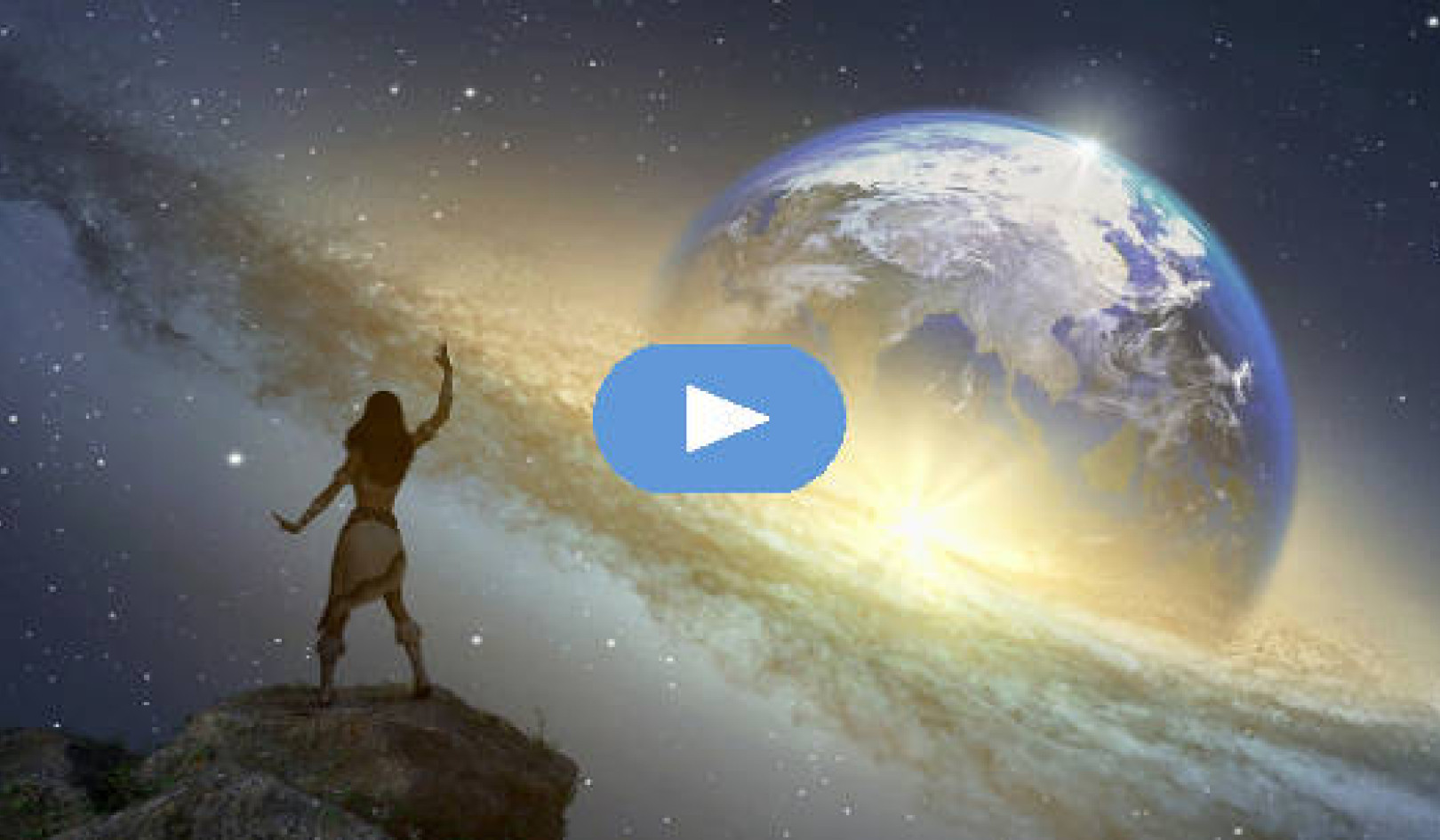Fundamentals of Astrology
by Barbara Hand Clow
![]() Imagine knowing in advance the timing and form that a major life crisis might take. That knowledge could help diffuse the "crisis" nature of the circumstances and create the possibility of understanding the experience while it was happening. And what if that "crisis" was the major crossroad of mid-life passage?
Imagine knowing in advance the timing and form that a major life crisis might take. That knowledge could help diffuse the "crisis" nature of the circumstances and create the possibility of understanding the experience while it was happening. And what if that "crisis" was the major crossroad of mid-life passage?
Identification of the true source of this crisis -- transformational powers rising spontaneously from within -- helps us to focus on demanding inner needs instead of concluding that outside events are the cause of the difficulty. And, knowing the exact timing of the intensity levels of the crisis creates very accurate observation of its processes plus the awareness that it will eventually end.
Uranus Opposition pushes the flow of kundalini energy to its peak during mid-life passage, and the timing of this maximum-pressure cycle can be determined in advance. The key is astrology, the study of individual life in relation to planetary patterns. This chapter presents some fundamental ideas of astrology that, though basic to any useful employment of astrology, have been distorted and misunderstood as a result of Western culture's attachment to a Newtonian concept of the universe. Curiously, now that we as a culture are more aware of the limitations of Newton's model, scientific explanations and acceptance of astrology are beginning to emerge.
During the last four hundred years of Western civilization, roughly equal to the rise of science as the model for how to think, all fields of scientific and metaphysical thought, including astrology, have been very influenced by the Newtonian mind-set, named after Sir Isaac Newton. Newton's work on physics was the basic scientific model during this period. Grossly simplified, the Newtonian universe is a gigantic clock that has specific and identifiable parts that do precise and predictable things according to patterns that can be calculated.
The Newtonian climate created a very predictive and deterministic form of astrology until the twentieth century, asking astrologers to forecast specific events that were to come to pass because of the placement of the planets, a task for which astrology is only moderately equipped. Since the worldview of astrologers is always influenced and shaped by cultural paradigms, many astrologers have fallen into predicting events based on Newton's clocklike concept of the universe and his mechanistic view of the lives of individuals. Furthermore, individuals seeking the advice of astrologers have often conceived of themselves as cogs in a turning wheel, and their personal needs and questions have reflected their own concepts of self.
In recent times, the simple Newtonian mechanistic cause/effect theory has been increasingly subject to challenge. First, science continually realizes that it does not have all of the information or perception necessary to determine the scientific principles that rule cause-and-effect relationships. There is a growing awareness of subtlety, of dimensionality, of the possibility of larger and more complex systems operating.
Secondly, and more importantly, other theories that are generally acknowledged as valid -- Einstein's theory of relativity, for example -- don't fit simply within Newton's model. Regarding the field of astrology, Percy Seymour of Great Britain, an astronomer whose text Cosmic Magnetism was highly received in 1986, has put forth a new theory that grounds astrology in science!A fellow of the Royal Astronomical Society, a principal lecturer of the Plymouth Polytechnic Institute, and the director of the William Day Planetarium in southern England, Dr. Seymour stunned both astrologers and astronomers with the recent publication of his book Astrology: The Evidence of Science, which bases astrology on magnetism, a universal force as significant as gravity. Seymour's theory holds that astrology is not mystical or magical, but "magnetic." Dava Sobel, who wrote about Percy Seymour in the December 1990 edition of Omni magazine, commented:
Astrology can be explained, he [Seymour] says, by the tumultuous magnetic activity of the Sun, churned to a lather by the motions of the planets, carried to Earth on the solar wind, and perceived by us via the Earth's magnetic field while we grow inside our mother's wombs.
In fact, Seymour contends that the horoscope can actually identify some of the genetic characteristics of the individual.
According to Seymour, the moment of birth is synchronized by a set of magnetic fluctuations. The fetus is influenced by the geomagnetic field but is sheltered from external sensory stimuli. Activation of the fetus's sensory apparatus at birth causes a fusion of the geomagnetic coding and the sensory apparatus, and that is why the birth chart is so critical. As the fetus begins to respond to its environment during the first three months of life -- the time of the first "solar square" -- the magnetic field imprint is exceedingly intense. Seymour notes that one of his students demonstrated that changes in the magnetic field of the Sun correspond to certain aspects or angles between the planets that astrologers deem significant. To be specific, these aspects include oppositions (180-degree angles between planets as viewed from Earth), squares (90-degree angles), and conjunctions (0-degree or close angles), all of which create momentous shifts in people's lives.
Western astrology starts with the birth chart or natal chart, which maps the basic energy field of an individual. That energy field encompasses environmental influences, genetic tendencies, and past-life history. The natal chart is the description of a seed or a new bud, reborn after a journey into other dimensions. After analysis of the birth chart, the advanced astrologer observes the inner unfoldment of the client's basic energy field through time by studying progressions and the outer unfoldment by means of planetary transits.
The use of progressions is a complex diagnostic technique similar to observing plant growth by means of time-lapse photography. The original bud -- the birth chart -- is time-lapsed through a lifetime by the astrologer, and the mysterious unfoldment of the birth energy field can be observed through time. We can image the progressions as a rose or lotus, which is a compact bud at birth that gradually unfolds and opens into its encoded exquisite flowering.
This subtle inner opening of the individual to the cosmos, as seen by the study of natal progressions, has always been one of the most accurate and mysterious astrological tools, and Dr. Seymour's magnetic theory offers the first scientific idea on why it works. During the first ninety days of life, there is much shifting in the solar magnetic field: there are three lunar cycles; Mercury, Venus, Earth, and Mars move great distances, and the slower-moving planets move slightly. This shifting sky makes a pattern imprint on the individual that continues to mature through time. These concepts are based on the belief that a created form contains seed patterns that will unfold according to patterns, just as an acorn will eventually become a gigantic tree if it is planted, is watered, and receives sunlight.
Transits -- when planets return to form significant angles in relation to the birth chart -- are the key to prediction of human response patterns to outside events. Beginning with the moment of birth, transits of the planets continuously "set off" life events when they return to conjunctions, squares, oppositions, and less critical angles to birthchart positions. I like to image them as beacons of light that shine into key parts of the birth chart, activating events for predictable periods of time. Like the forces triggering the growth of an oak tree, these transits are seasonal and are large patterns related to the energy of the Sun that creates weather patterns and electromagnetic fields.
The key transition growth points occur at the return of Saturn to its original position in the birth chart at age 30 (conjunction); at the opposition of Uranus to its position in the natal chart at age 38 to 44; and at the return of Chiron to its natal position (conjunction) at age 50. If one lives to age 84, Uranus returns to its natal position, and this conjunction is the completion of the evolution of consciousness, just as Saturn Return is the completion of structural evolution. Notice how these aspects creating the key life passages are also the aspects that have the greatest impact on the solar magnetic field.
What about astrology's potential to accurately predict things in our lives? Before we get deeply into the power of astrological influences, let us explore just exactly what astrology can reveal. Astrology can offer a very specific energy analysis of trends, the quality of possible outcomes, and the nature of events likely to occur based on transit patterns. An astrologer can be strikingly accurate with a specific prediction by using some general information about energetics, and then can take a potshot at the nature of an event to come and even guess its outcome. For example, if an individual's chart shows that he or she will be experiencing financial loss, a comment about the loss of someone's house or business might turn out to be true. But the overall influence and tendency -- the nature of the energy field -- is what is really important.
Astrology as Energy Potential
When Ellen came to me, she was 38 years old, divorced, and the mother of two small children. All she wanted was a husband. I saw a Venus transit to the 7th house of her natal chart coming up in eighteen months, indicating that "the love of her life" would manifest. Normally, I would have explained to her that she was going to have some significant growth of her receptive potential, which would possibly attract another being who could learn with her while she deepened. But, because she was a single mother and I felt sorry for her, I allowed her to hear that the love of her life was going to appear. I didn't say it would be a man, but I knew she heard it that way.
Eighteen months passed. After having an affair with a person who seemed to be useless as a potential mate, Ellen gave birth, lonely and unmarried, to a baby girl. And it was this little girl -- not the man who impregnated Ellen -- who became the love of her life! This little girl, who was born prematurely and weighed less than five pounds, opened her mother's heart.
With this example, we can see what astrology is and is not. Not a parlor game for predicting mechanics and events, astrology is a complex, synchronistic science, a science of coalescing energetic fields. Astrology can predict the quality of energies presented by general future patterns that appear likely to occur, and by observing a person's reaction to specific planets over time, a good astrologer can tell what the person is, and will be, struggling with.
Astrology predicts upcoming energetic forms, and in order to read natal charts on that basis, the astrologer must develop very good descriptive powers. But to narrow those energetic forms to anything less than the energy form itself -- to focus on the form that energy might take, for example -- drastically reduces potential growth by limiting possibility. By helping their clients to see the "energy" of what is coming, astrologers offer them the opportunity to (1) prepare themselves, (2) have a very broad view of what is going on as it starts to happen, (3) be able to realize the patterns and synchronicities that make life more subtle, and (4) avoid deep trouble during a tough transit.
If astrologers fix the upcoming phase into specifics, clients are robbed of the very gift that astrology actually can offer them: the information needed to live life consciously. More insidiously, prediction of the form a particular energy might take involves judgments by an astrologer about a client's future possibilities. Such judgments can be dangerous. On the positive side, a reading of a chart for energetics, instead of specifics, may help us get beyond fear.
Transit phases last from days to years, depending upon the length of a planet's orbit. For example, Venus transits might last only a few days, but Pluto and Neptune transits last for a few years. The transit has a beginning, middle, and end. During this time, certain issues are likely to arise that will correspond to particular phases of the transit. There is usually a beginning point, when we realize that a change needs to happen and what that change might be; a middle point, when we do the integration work required for the shift to occur; and an end phase, when we absorb the deeper spiritual meaning of the change. If we can "do" the transit phase -- absorb the full meaning and personally integrate the lesson -- we are on our way to becoming much more conscious.
Most importantly, the astrologer can advise when it will all end! Fear starts to take us over when we feel lost in the deep forest of the night -- the subconscious mind. We panic when we feel like we are falling into an endless pit dug by chaotic events around us. Knowing that there is an end to the crisis can help us not to become unbalanced or even suicidal.
The astrologer can also chart exactly when the energy will be the most intense so that an event that might seem to be irrational actually has an identifiable basis. This also makes it less likely for a person to attribute an inner change only to outside forces, thereby losing the chance to learn the lesson of the transit. For example, someone who is mugged and whose astrologer had warned of the presence of a Mars/ Pluto aspect, which indicates a lesson about violence and the underworld, might choose to learn about what violence brings up for him or her rather than move to another community based on a decision that crime had become endemic in their first location.
 This article is excerpted from "Liquid Light of Sex" by Barbara Hand Clow. Reprinted with permission of the publisher, Bear & Co. http://www.InnerTraditions.com
This article is excerpted from "Liquid Light of Sex" by Barbara Hand Clow. Reprinted with permission of the publisher, Bear & Co. http://www.InnerTraditions.com
Info/Order this book.
About the Author
![]() Barbara Hand Clow is an astrologer, spiritual teacher, and publisher. She is the author of Chiron: Rainbow Bridge Between the Inner and Outer Planets; Eye of the Centaur; Heart of the Christos; Signet of Atlantis; and the bestselling Pleiadian Agenda: A New Cosmology for the Age of Light. This article is excerpted with permission from her book "Liquid Light of Sex" published by Bear & Co.
Barbara Hand Clow is an astrologer, spiritual teacher, and publisher. She is the author of Chiron: Rainbow Bridge Between the Inner and Outer Planets; Eye of the Centaur; Heart of the Christos; Signet of Atlantis; and the bestselling Pleiadian Agenda: A New Cosmology for the Age of Light. This article is excerpted with permission from her book "Liquid Light of Sex" published by Bear & Co.




























